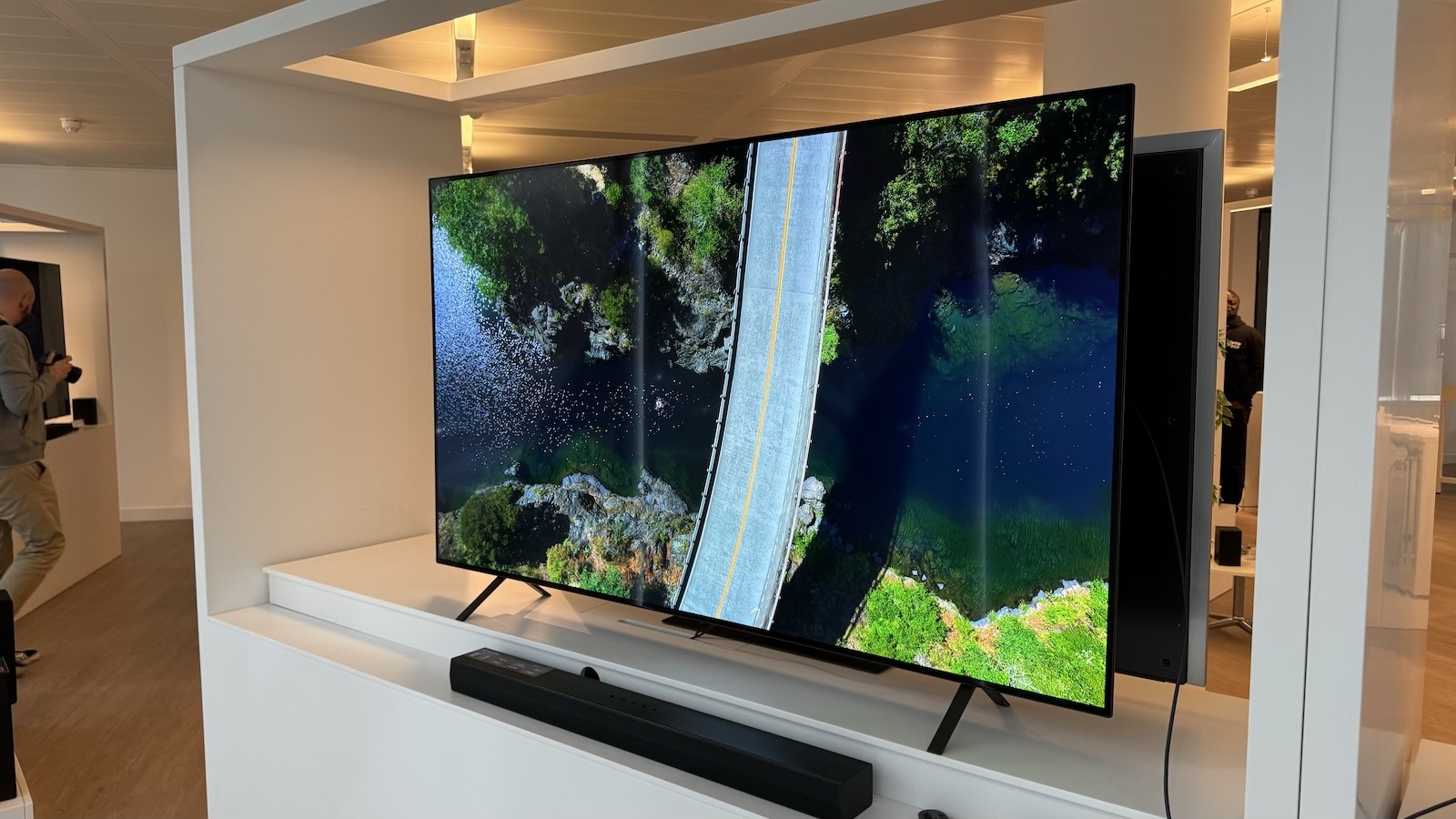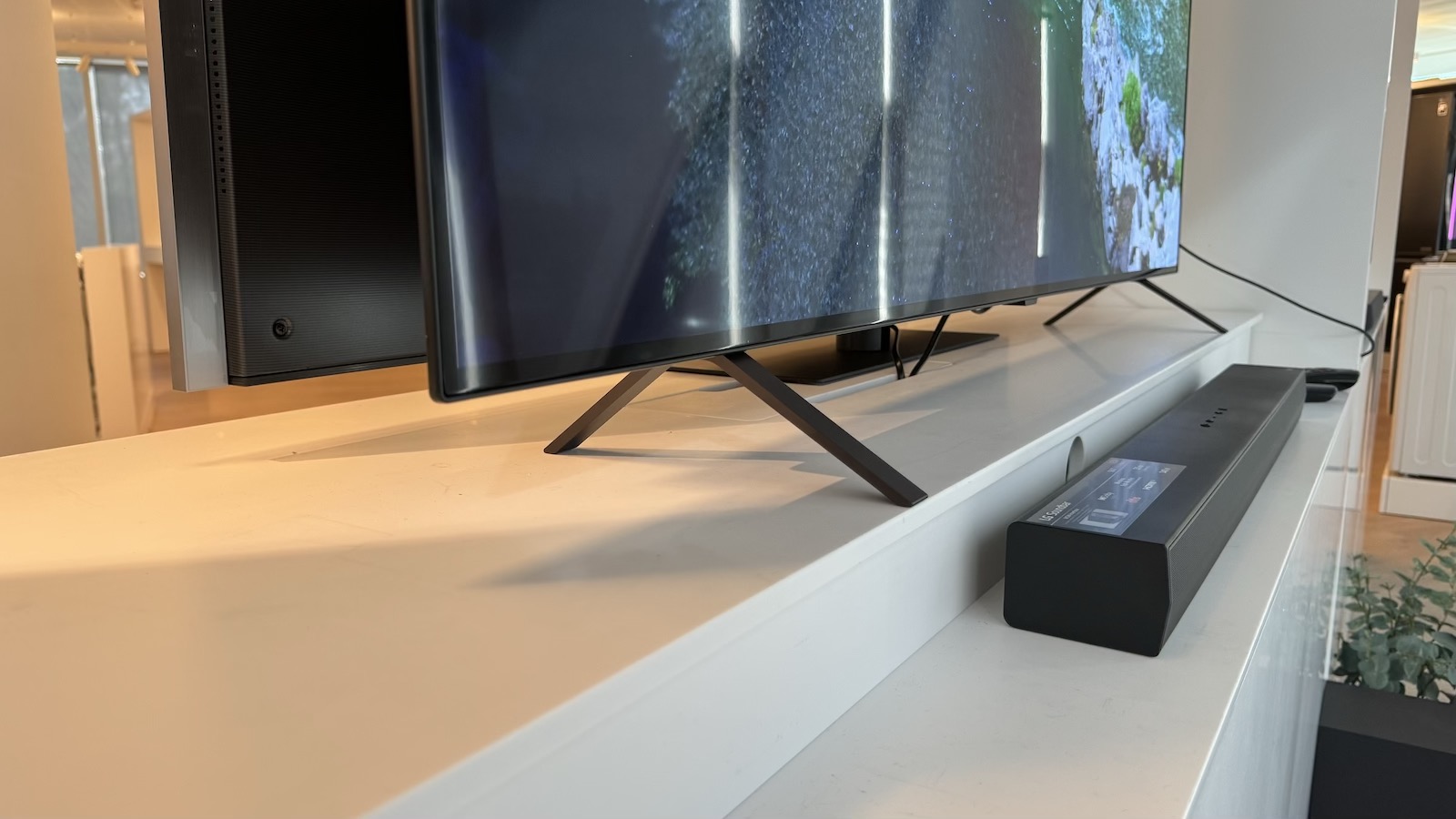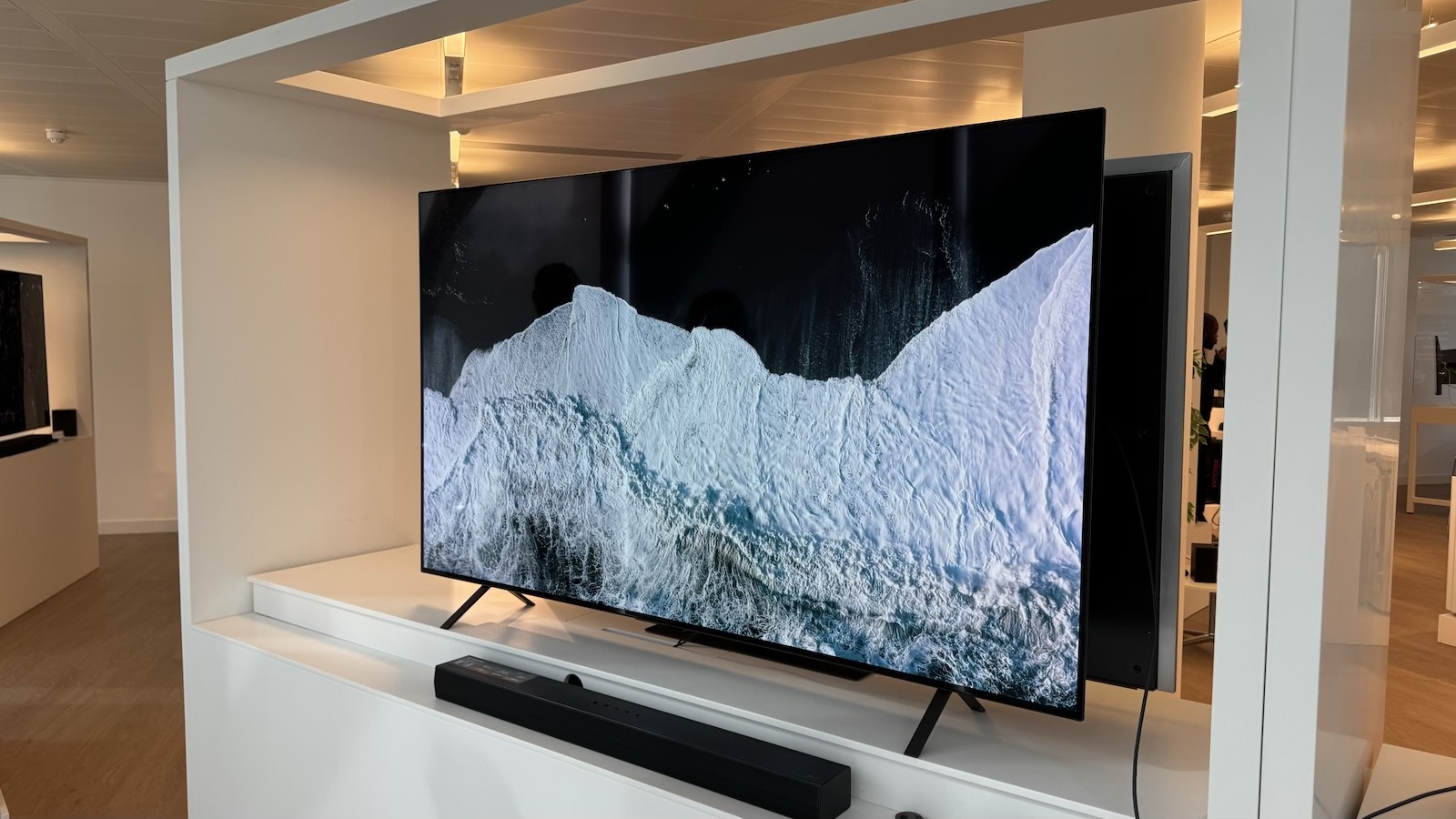
LG’s C-series models are the most popular OLED TVs in the world, and for good reason: they represent a near-perfect confluence of performance, features and price. This year’s C4, though, could be beaten in that regard by its upstart sibling, the B4.
While the gap between the C4 and G4 will this year be wider than at any time in the history of the C series and G series, the gap between the B4 and C4 is set to be closer than ever. No longer will going for the B series model mean accepting a reduced number of HDMI 2.1 sockets, nor will it bar you from owning a smaller OLED, as the B4 will be available as a 48-inch model in another first for the range.
Of course, the C4 will still have some advantages over its B-series brother, but a short hands-on session in LG’s UK HQ suggested that many OLED buyers will be very well served indeed by the brand’s new entry-level model.
Price
UK pricing for LG’s 2024 TV range is yet to be revealed, but we do now have US pricing for some models, including most of the B4s. So, in the States, the 55-inch B4 will be priced at $1700, the 65-inch version will be $2200, and the 77-inch model will be $3400.
Here’s a table comparing the US pricing of the B4 and C4:
As you can see, the B4 is $300 cheaper than the C4 at 55 and 77 inches, and a huge $500 cheaper at 65 inches. In both cases, that’s a significant saving that will be tempting to a lot of buyers – presuming the performance and feature downgrades aren’t too significant, of course.
What about UK pricing? As mentioned, we don’t yet have that, but it’s probably reasonable to expect a difference of roughly £300 between the B4 and C4 at each size.
Design

The design of the B4 is similar to that of the C4 (which looks identical to last year’s C3) but there are a fair few differences. The most obvious is that all versions of the B4 have feet, whereas all but the 42-inch C4 have a pedestal stand. The feet of the B4 are a bit spindly and they give the TV a fairly wide footprint, but they also create a space that will be big enough for a compact soundbar.
The plastic enclosure that contains the processing hardware, connections and speakers covers more of the B4’s rear than does the C4’s equivalent, but the overall thickness of the set is an identical 4.5cm and there’s still a fairly large part of the chassis that is super-thin in a way that will seriously impress visiting friends and family.
Features

The big news here is that unlike its predecessors, the B4 features four HDMI 2.1 sockets that support 4K/120Hz, VRR and ALLM. That’s a really big deal for hardcore gamers who find two HDMI 2.1 sockets to be too limiting. The B4 also supports Dolby Vision gaming up to that 4K/120Hz limit, which will be a boon for Xbox Series X/S gamers, and we understand that the superb HGiG implementation that has made previous LG OLEDs so easy to calibrate for HDR games will return for the B4 as well as the C4 and G4.
The B4 doesn’t entirely match the C4 for gaming specs, as the latter has a new 4K/144Hz mode, but this will only be useful for the most hardcore PC gamers with super-high-end rigs, as the PS5 and Xbox Series X can’t go beyond 4K/120Hz.
LG’s 2024 TV operating system is predictably called webOS 24, and it’s a slight but useful refinement of last year’s version. The advertisement banner (which, let’s face it, shouldn’t exist at all) has been shrunk slightly and the Quick Cards (essentially folders of related apps and features) have been shrunk significantly. This has created space for a row of recommended content at the bottom of the home screen, making it quicker to jump straight to a TV show or movie. LG is also planning to make these recommendations more personalised through the addition of user profiles.
While the B4’s user experience is the same as that of the C4, the Alpha 8 AI Processor that powers it isn’t as advanced as the C4’s Alpha 9 AI Gen 7. We would like to think that this won’t have a significant impact on the responsiveness of webOS, though, and it doesn’t appear to make any difference to the picture and sound processing features that are available on the two TVs. Both models get the features of last year’s C3, plus a couple of new additions, including ‘Object Enhancing by Visual Perception’, which is designed to subtly enhance the sharpness of people and animals in the foreground of an image.
There will definitely be at least one difference between the two TVs in terms of picture quality, though, and that is brightness. While the C4 is what LG terms an ‘Evo’ OLED, the B4 is not. This distinction refers to a number of elements, most obviously but not limited to the type of OLED panel that each model features, but it boils down to a fairly simple fact: the B4 is not capable of going as bright as the C4.
But just how much of an issue is that?
Picture

Based on our brief hands-on experience in the showroom of LG’s UK HQ, the B4’s relative lack of brightness shouldn’t be an issue for many people.
While the nearby C4 was certainly brighter, it wasn’t to a vast extent, and the B4 looked plenty bright enough in its own right, even with plenty of ambient light in the room (you can see quite obvious reflections in the photos accompanying this piece, but those were far less noticeable in person). It was a somewhat murky day in Weybridge, and there were blinds to reduce some of the light entering through the windows, but those are the sorts of conditions in which a lot of daytime living room viewing takes place. If you regularly watch TV in a room with loads of direct sunlight, the B4 probably won’t be bright enough to punch through, but my instinct at this point is that it will be sufficiently bright for most people and conditions.
Other than that, the B4 looked very similar in action to the C4. You of course get the awesome inky blacks and pixel-level contrast control that you get from any OLED TV, and both sets looked really well judged in terms of colours (I was able to put both sets into their Filmmaker Mode preset). The B4 also looked just as detailed as the C4.
Of course, this was a very brief and limited hands-on experience that featured only LG demo content and a couple of movie trailers, so we will have to wait until we get both TVs into our independent testing facility for a complete and comprehensive review before we can pass final judgement on either.
Sound
The B4 was muted during my time with it so we unfortunately only have the specs to go on here.
While the C4 features a 40W 2.2-channel audio system, the B4 has just 20W of claimed power and two channels. That is a slight concern, particularly as LG already has a reputation for producing TVs with sub-par sound, but it’s certainly true that a lot can be done with processing.
Early verdict

The new B4 has been getting a lot of attention on account of its spec boost over last year’s model, and while we will need to conduct a comprehensive, comparative and independent review before delivering a final verdict, my instinct is that it will be more than enough TV for most people.
While the price difference (confirmed for the US and assumed for the UK) between it and the C4 isn’t massive, that is money that might be better spent on a budget soundbar than it is the additional brightness and 144Hz support of the more expensive TV. Either way, at this early stage the B4 is looking like a strong option in its own right.
MORE:
We have also been hands-on with the C4 and G4
These are the best TVs you can buy right now







